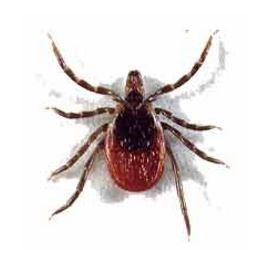
NPS Photo | McClain Report a Safety HazardIf you notice a safety hazard, please submit a safety hazard report. Safety TipsKnow Your LocationTowpath mile markers begin with Mile 0 in Georgetown and end with Mile 184.5 in Cumberland. If an emergency occurs, your ability to provide park and/or emergency staff with your location is important. Make a Plan10 Tips to Plan Your Trip Like a Park Ranger Share Your PlansIf possible, let someone who is not coming with you know details about your planned activities:
Be sure to check in with your contact when you complete your activity. If you have an emergency or you are concerned about someone's well-being, please call 911. Drink WaterWell water is generally available in across the park from mid-April (around the 15th) to mid-November (around the 15th). Drive-In Campgrounds: Well water within the drive-in campgrounds is potable and treated with iodine - do NOT drink if you have any iodine allergies or if you are on medication for an overactive thyroid. In general, well water is clean and able to be used without additional treatment. However, as a general precaution for wells located in a flood zone, you are advised to boil or treat the water before use for your own protection. Hiker-Biker Campsites: Non-potable water is available in hiker-biker campsites. Please plan to filter, chemically treat, or boil the water before use for your own protection. The wells will remain in the hiker-biker campsites and, as long as visitors bring their own sanitization equipment, there will be a more reliable water source as handles will not be removed from these wells. Visitor Centers, park buildings, and comfort stations are provided water by the nearby municipality and do not require drinking water sampling by the park. Please note that the Swains Lock campsite draws on the same municipal water as the Swains Lockhouse and will remain potable.
Water availability is subject to change. Always bring plenty of water with you as a backup option. Please plan your trip accordingly. Recreate ResponsiblyBikingKeep yourself and others safe by following the speed limit (15 MPH maximum). The towpath is filled with rocks and holes that can throw you off your bike. Bicyclists should yield other recreation types including horse riders, hikers, and walkers. Ride single file and stay to the right except when passing. Make sure to walk bikes over aqueducts and through tunnels. Helmets required in accordance with county ordinances. Children under the age of 18 are required to wear helmets in Montgomery County, MD, and children under the age of 16 are required to wear helmets in other areas of the park. Hiking and Rock ScramblingRock scrambling is allowed within selected areas of the park. One of the park's most popular trails for rock scrambling is the Billy Goat Trail A. When hiking or scrambling, please stay on the trail to avoid injuring endangered floral and plants. Rock scrambling off trail is dangerous and is strongly discouraged. We have had serious visitor injuries and a fatality with off trail rock scrambling so please stay on trail. Dress appropriately and drink plenty of water. Rock ClimbingRock climbing is allowed within selected areas of the park. The most popular rock climbing area is at the Carderock Recreation Area located adjacent to the Clara Barton Parkway. Rock climbing in other areas of the park is dangerous and has resulted in visitor injuries. Please use appropriate equipment when climbing and stay within your abilities. SwimmingSwimming is not allowed in the canal waters and is prohibited within the Washington, DC and Montgomery County, MD section of the Potomac River. Swimming in other sections of the Potomac River is discouraged due to hidden flood debris, deep holes, and possibly strong currents. Many people have drowned in the Potomac River because they underestimated the strength of the river current, were drinking alcohol when they decided to go swimming, or didn't think the river was deep enough to require any swimming ability. Please use caution when entering the river and do not swim in the river when the water is running high or strong. 
Sleeping Bear Dunes National Park Wildlife and Pet SafetyProtect Your PetsLots of people enjoy walking the towpath with their dogs. Working together, we can make sure that people, pets, and the park are all protected. WildlifeHelp us keep wildlife wild. Observe and photograph all wildlife from a distance. Use telephoto lenses and observe quietly. Ticks and Tick-borne IllnessThe deer tick, also known as wood tick or black-legged tick, is known to carry and cause Lyme disease. To prevent ticks, be sure to stay on trail and wear insect repellent. Please visit the CDC website to learn more about Lyme disease and proper tick removal. Environmental ConditionsWeatherSevere weather conditions may occur suddenly and without warning, creating unsafe conditions along the Chesapeake and Ohio Canal National Historical Park. Below are some examples of severe weather conditions and tips for staying safe if you encounter extreme weather during your visit. Get the latest weather forecast

NPS Hazard Tree SafetyFalling branches, limbs, and trees can cause hazardous conditions, and may pose risks to life and infrastructure, especially in developed areas. While in the park, please remain observant of your surroundings, particularly in campgrounds, picnic areas, and while on the towpath or other trails.
Be aware of your surroundings. Trees, limbs, and branches can fall at any time.
Be attentive while hiking and biking, looking up and around regularly, especially during high winds.
Be cautious when selecting a place to park, camp, picnic, or rest. Look for dead, cracked, broken, or hanging branches, or under trees that are rotten at the base or have cracked bark peeling off the trunk. Learn more about Safety and Hazard Tree Management. |
Last updated: September 11, 2025
